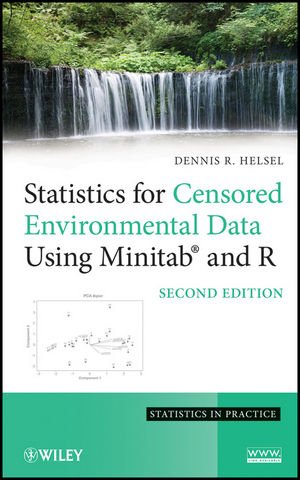

Most ebook files are in PDF format, so you can easily read them using various software such as Foxit Reader or directly on the Google Chrome browser.
Some ebook files are released by publishers in other formats such as .awz, .mobi, .epub, .fb2, etc. You may need to install specific software to read these formats on mobile/PC, such as Calibre.
Please read the tutorial at this link: https://ebookbell.com/faq
We offer FREE conversion to the popular formats you request; however, this may take some time. Therefore, right after payment, please email us, and we will try to provide the service as quickly as possible.
For some exceptional file formats or broken links (if any), please refrain from opening any disputes. Instead, email us first, and we will try to assist within a maximum of 6 hours.
EbookBell Team

4.0
86 reviewsPraise for the First Edition
" . . . an excellent addition to an upper-level undergraduate course on environmental statistics, and . . . a 'must-have' desk reference for environmental practitioners dealing with censored datasets."
—Vadose Zone Journal
Statistical Methods for Censored Environmental Data Using Minitab® and R, Second Edition introduces and explains methods for analyzing and interpreting censored data in the environmental sciences. Adapting survival analysis techniques from other fields, the book translates well-established methods from other disciplines into new solutions for environmental studies.
This new edition applies methods of survival analysis, including methods for interval-censored data to the interpretation of low-level contaminants in environmental sciences and occupational health. Now incorporating the freely available R software as well as Minitab® into the discussed analyses, the book features newly developed and updated material including:
A new chapter on multivariate methods for censored data
Use of interval-censored methods for treating true nondetects as lower than and separate from values between the detection and quantitation limits ("remarked data")
A section on summing data with nondetects
A newly written introduction that discusses invasive data, showing why substitution methods fail
Expanded coverage of graphical methods for censored data
The author writes in a style that focuses on applications rather than derivations, with chapters organized by key objectives such as computing intervals, comparing groups, and correlation. Examples accompany each procedure, utilizing real-world data that can be analyzed using the Minitab® and R software macros available on the book's related website, and extensive references direct readers to authoritative literature from the environmental sciences.
Statistics for Censored Environmental Data Using Minitab® and R, Second Edition is an excellent book for courses on environmental statistics at the upper-undergraduate and graduate levels. The book also serves as a valuable reference for?environmental professionals, biologists, and ecologists who focus on the water sciences, air quality, and soil science.